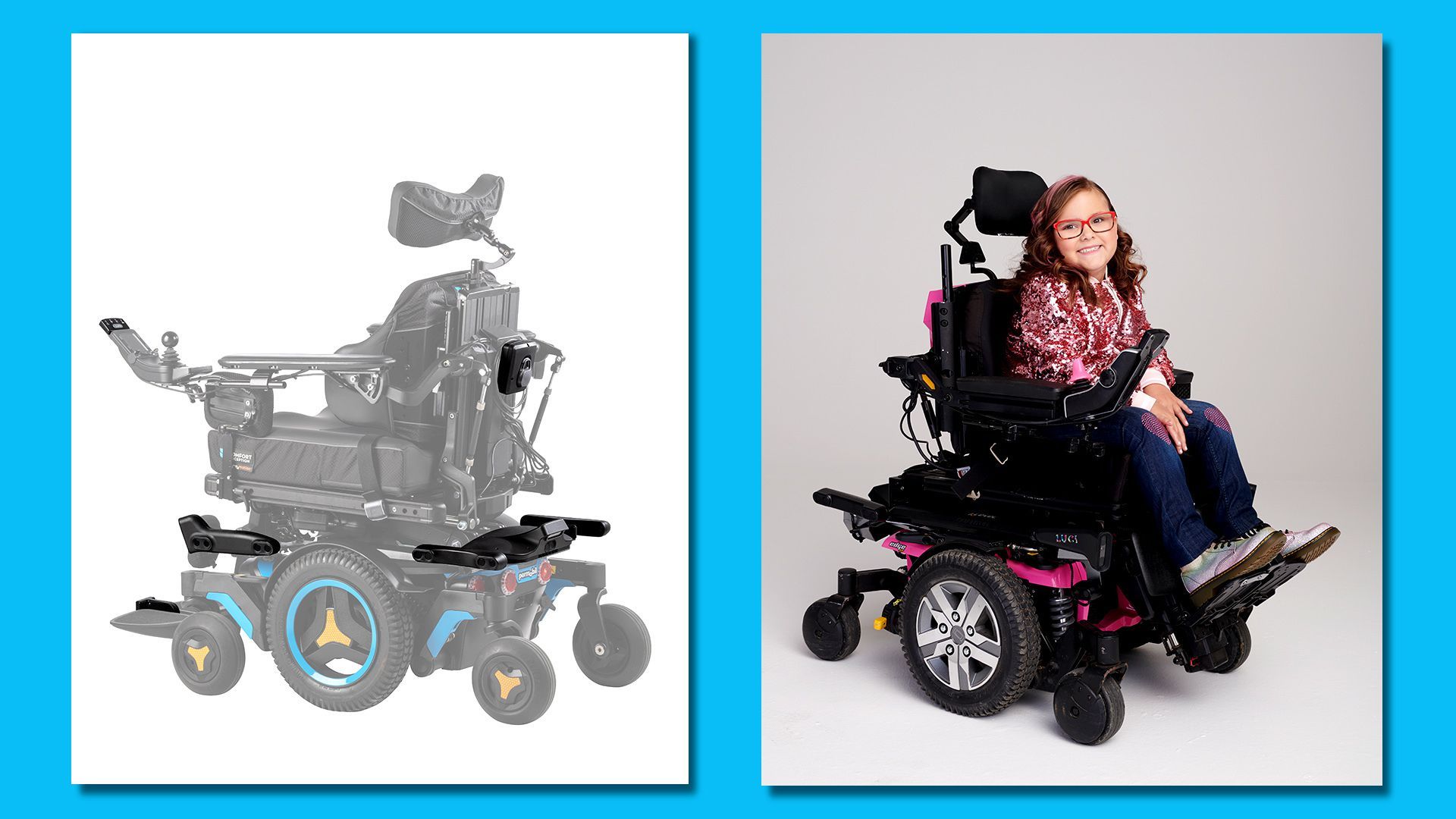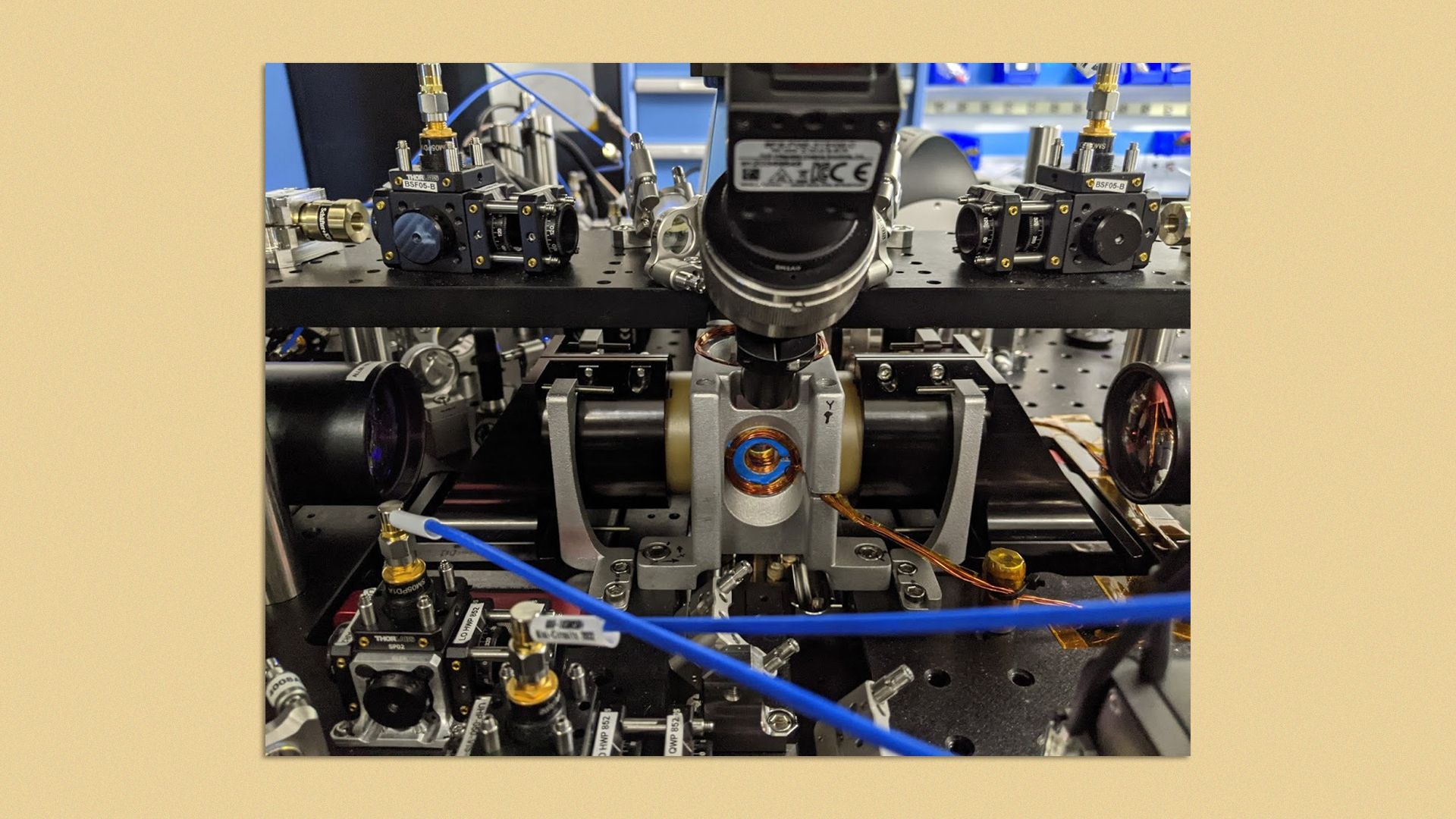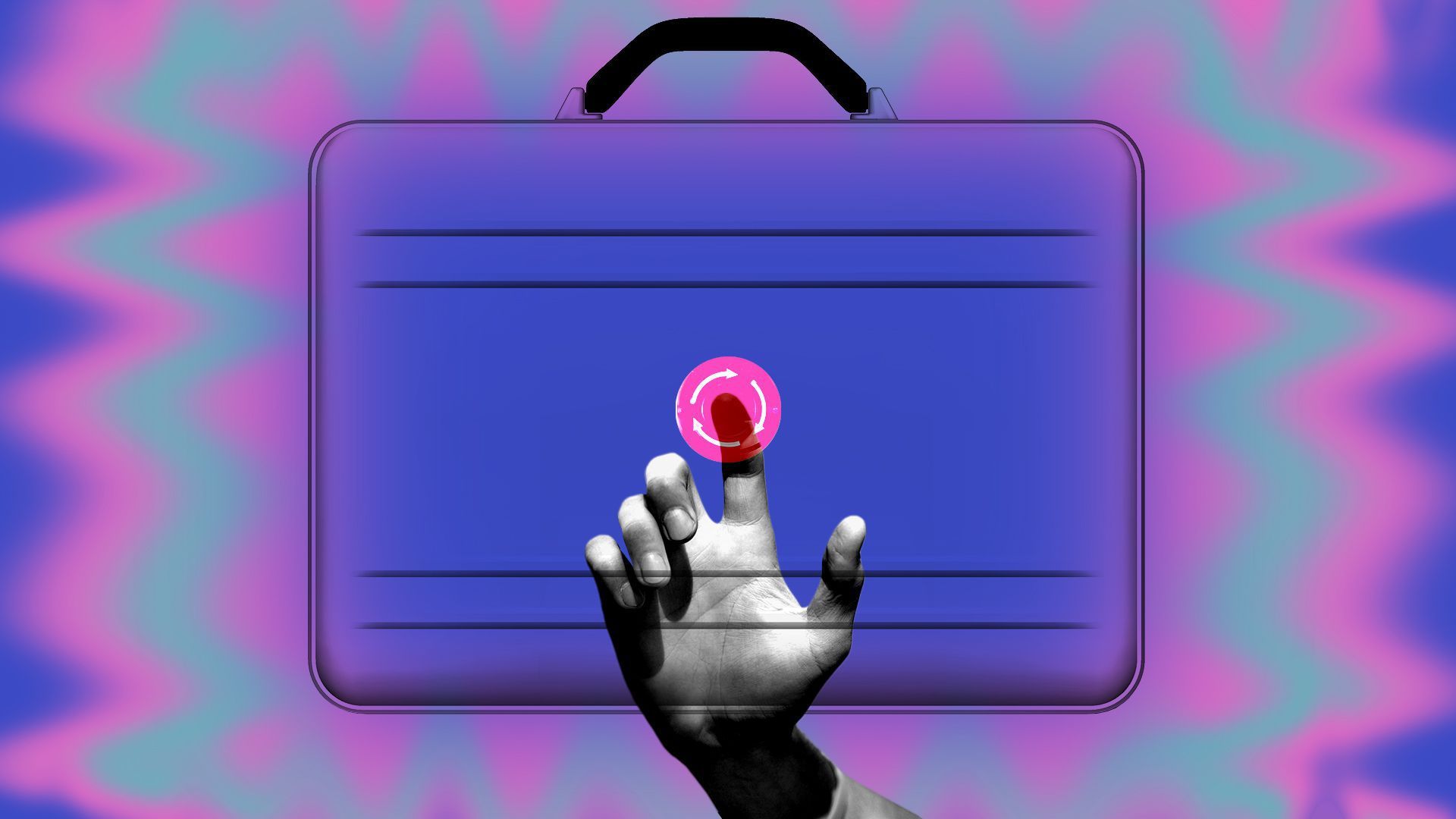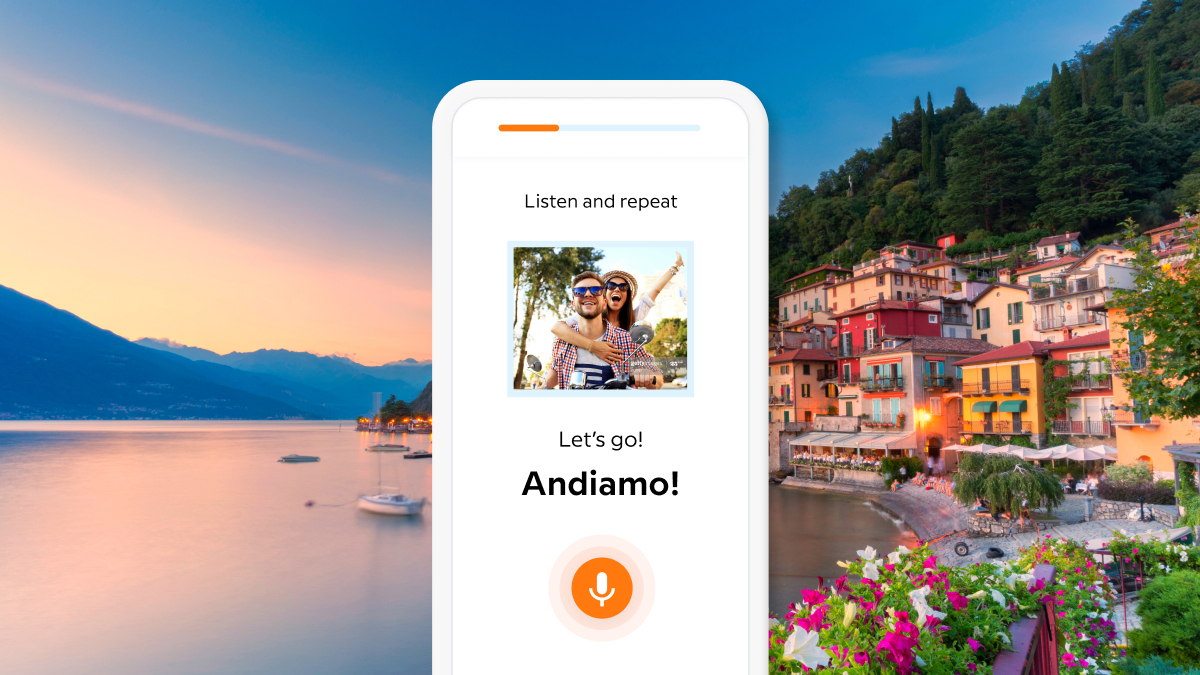| | | | | | | Presented By Babbel | | | | Axios What's Next | | By Bryan Walsh, Erica Pandey and Joann Muller ·Jul 08, 2021 | | Today we're covering the battle over the future of remote schooling, smart wheelchairs and incorrect opinions about pizza. "What was next" trivia: On this day in 1889, John L. Sullivan defended his title in the last one of what? 🏆 - Credit to reader David Kimmel for being the first to note that debris from what was supposedly a UFO was found in Roswell, New Mexico, in 1947. 🛸
- Send your answer, along with tips and feedback, to whatsnext@axios.com.
Today's Smart Brevity count: 1,320 words ... 5 minutes. | | | | | | 1 big thing: The post-COVID stickiness of hybrid school |  | | | Illustration: Annelise Capossela/Axios | | | | America's public schools are ready for a return to classrooms this fall, but virtual learning still isn't going away, writes Erica Pandey. What's happening: Whether to accommodate some families or cover for teacher shortages, many schools are holding onto remote classes for the fall. But much more than with remote work, remote learning has been littered with problems and inequities. By the numbers: At the end of the 2020–21 school year, only about 2% of K–12 students in the U.S. were attending virtual-only schools, and 70% were in traditional, in-person schools, according to the Burbio School Opening Tracker. - A sizable chunk — 28% — were in hybrid schools, which has typically meant some days in the classroom and some days at home.
Hybrid in a post-pandemic world will mean in-person school for most students with an all-remote option for those who want it. - "Districts have got to do it," says Larry Ferlazzo, a high school teacher in Sacramento. "If they don't, parents will just find a charter school to send the students, and we'll lose the students."
- Vaccination rates for teens are far lower than those for adults, and young kids aren't eligible yet, so families with high-risk members remain wary of sending their kids back, though scientists say schools can safely reopen this fall.
- There are also many Asian and Black families who are saying they want to keep their kids at home so they don't encounter racism at school.
And hybrid has perks worth carrying into the post-pandemic world. - Remote learning has helped address accessibility issues for students with disabilities.
- The flexibility afforded by hybrid learning has become an essential part of life for many students. They've gotten jobs to supplement their family's income or have been helping out with child care at home and want to continue doing so after the pandemic.
- And virtual instruction could eventually allow teachers in specialty subjects, like foreign languages or coding, to reach scores of students in rural, under-resourced schools, says Jon Hale, a professor of education at the University of Illinois.
But, but, but: "Before we can think of this as the future, we have to fix all the places where the technology still isn't working," says Kevin Kumashiro, former dean of the school of education at the University of San Francisco. - Pandemic-era virtual learning exacerbated a slew of existing inequities in the education system. Richer schools and students were able to harness technology to maintain relatively high-quality instruction, while poorer students fell behind with stripped-down curriculums or without reliable internet access.
And while new technologies could enrich public education, experts fear districts will use virtual school to cut costs through bigger class sizes and fewer teachers. Read the rest. |     | | | | | | 2. Wheelchairs get the Tesla treatment with new smart tech |  | | | LUCI is an add-on software and hardware platform that introduces smart technology for power wheelchair users. Photos courtesy of LUCI. | | | | Motorized wheelchairs promise greater freedom for people with mobility challenges, and now, with technologies inspired by nascent self-driving cars, they're getting smarter — and safer, writes Joann Muller. Why it matters: A specialized wheelchair can cost as much as a Tesla but has none of its modern technology, putting vulnerable users at risk for collisions and other accidents, like tipping over a curb. What's happening: A startup formed by two brothers with a personal motivation developed LUCI, a software and hardware platform that introduces smart technology for power wheelchair users. - The "smart frame" kit includes multiple sensors — cameras, radar and ultrasonic — along with an ARM processor that acts as the chair's "brain."
- LUCI can detect pets or a crawling baby, for instance, and automatically stop the chair. It can also stop for uneven pavement or dangerous drop-offs.
- With built-in Wi-Fi and Bluetooth connections, users can link their chair to an at-home assistant like Alexa, and also communicate with caregivers.
- "We're turning the wheelchair into the edge device, or command module, for these folks," said Jered Dean, LUCI co-founder and chief technology officer.
The backstory: Jered and his brother Barry Dean set out to help Barry's 19-year-old daughter, Katherine, who was born with cerebral palsy and has used a wheelchair her entire life. The bottom line: A motorized wheelchair can cost anywhere from $30,000 to $90,000. For an additional $8,445, LUCI makes it smarter. Read the rest. |     | | | | | | 3. An ultra-cold approach to quantum computing |  | | | ColdQuanta's Hilbert quantum computer. Photo: Courtesy of ColdQuanta | | | | A Boulder, Colorado-based startup says it achieved a new milestone in quantum computing with an approach that traps atoms in an ultra-cold array, writes Bryan Walsh. Why it matters: Companies are experimenting with strategies to develop quantum computers. Cold atom technology promises to produce qubits — the basic unit of quantum computing — that are more stable, a key goal of the emerging industry. Driving the news: ColdQuanta announced yesterday that it had been able to trap 100 qubits in a large and dense 2-D cold array for its quantum computer. - The company will be using the technology in a quantum computer — code-named "Hilbert" after David Hilbert, a pioneer in the mathematics that undergirds quantum computing — that it expects to be available for cloud customers by the end of the year or early 2022.
How it works: ColdQuanta traps cesium atoms in a 2D array using lasers, which brings down their temperature to just a few microdegrees above absolute zero, says Paul Lipman, the company's president of quantum computing. - "Because the qubits are extremely cold, it reduces the noise in the system, and we can enjoy much longer coherence times than you would have with a superconducting quantum computer," he adds.
Read the rest. |     | | | | | | A message from Babbel | | Here's a skill you can show off this summer | | |  | | | | Travel, friends, adventures – it's happening. Get ready with Babbel and start having conversations in a new language – such as Spanish, Italian, or Portuguese – in as little as 3 weeks. Get 60% off during their 4th of July sale. Sign up today. | | | | | | 4. Quartz CEO on early learnings from hybrid work |  | | | Illustration: Annelise Capossela/Axios | | | | The CEO of the news site Quartz wrote a smart piece about the first month of his company's partial return to the office and the lessons other firms can take from their experience, writes Bryan. By the numbers: 68% of Quartz employees who live in New York or its surrounding suburbs have come in at least once since the New York office reopened June 1, but only a handful used it regularly. Among Zachary M. Seward's takeaways: - The best in-office work is done in teams: Seward saw groups of employees come in on the same days, "as an excuse to see each other and liven up the office."
- Hybrid mostly means remote: Because most of Quartz is still out of the office, Seward has found that in-office workers should defer to remote employees, even if that means Zooming into meetings from the workplace.
- Proximity bias is overstated: Work experts have worried about in-office workers getting an advantage over remote employees, but Seward writes that if face time matters at a company, "it's not really a hybrid workplace nor a particularly inclusive one."
|     | | | | | | 5. 1 food thing: Portland is (probably not) America's best pizza city |  | | | Portland, Oregon! Where pizza was, if not invented or perfected, at the very least enjoyed. Photo: Bhushan Thakurdwarkar via Getty Images | | | | According to the authors of the forthcoming cooking book, "Modernist Pizza," the greatest pie in America is found in: Portland, Oregon. The other side: No it's not, writes Bryan. What's happening: Nathan Myhrvold — the former Microsoft CTO and doyenne of molecular gastronomy — and Francisco Migoya ate almost 400 pizzas from around the country as part of the research for their three-volume, 1,700-page book. - Portland topped the ranks because it offers "multiple choices of great pizzerias," Myhrvold told Bloomberg, from spots like Apizza Scholls and Lovely's Fifty Fifty.
- The famous old pizzerias of New York, by contrast, "aren't very good," Myhrvold said.
My thought bubble: I've always enjoyed eating in the City of Roses, and I'm sure they make a decent pie. But come on. Credit: F&F Pizzeria The bottom line: "Modernist Pizza" will be available on Oct. 5 for just $382.50, or a little more than the cost of 13 plain pies from F&F. Survey time: Who makes your favorite pizza and what makes it so good? Drop us a line at whatsnext@axios.com. |     | | | | | | A message from Babbel | | Here's a skill you can show off this summer | | |  | | | | Travel, friends, adventures – it's happening. Get ready with Babbel and start having conversations in a new language – such as Spanish, Italian, or Portuguese – in as little as 3 weeks. Get 60% off during their 4th of July sale. Sign up today. | | | | Thanks for reading! If this email was forwarded to you, subscribe here! |  | | It'll help you deliver employee communications more effectively. | | | | | | Axios thanks our partners for supporting our newsletters. If you're interested in advertising, learn more here.
Sponsorship has no influence on editorial content. Axios, 3100 Clarendon Blvd, Suite 1300, Arlington VA 22201 | | | You received this email because you signed up for newsletters from Axios.
Change your preferences or unsubscribe here. | | | Was this email forwarded to you?
Sign up now to get Axios in your inbox. | | | | Follow Axios on social media:    | | | | | |










No comments:
Post a Comment